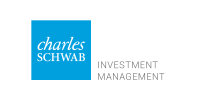What Does Short Percentage of Float Mean?
The short percentage of float is defined as the percentage of a company’s stock that has been shorted by institutional traders, compared to the number of shares of a company’s stock that is available for public trading.
The short percentage of float is therefore a common parameter used in gauging the short interest in a stock. It is derived by dividing the number of shares of a stock that have been sold but not covered by the number of outstanding shares of the stock in question. In other words, you can calculate the short percentage of float by dividing the total number of shares of a stock that have already been shorted by the total number of shares that are available to trade on an exchange.
Calculation
If for instance, a company has 40 million of its shares available for trading (i.e. the floated shares) and traders have already shorted 8 million of those shares, then the short percentage of float is calculated by dividing 8 million by 40 million and multiplying this figure by 100 to get the short percentage of float.
That is, 8,000,000/40,000,000 X 100 % = 20%
Theoretically speaking, it is possible that all the shares of a company that are listed for trading can be shorted, giving a short percentage of float of 100%. However, this is not usually the ase in practical terms. It is generally held that a short percentage that exceeds 40% is generally a high figure, and connotes extreme bearishness of a stock. The lower the percentage, the lower the chance of the stock price going down as a result of generalized short interest in that stock.
Why is the Short Percentage of Float Important?
Short percentage of float provides data that can be used to investigate the reasons behind extreme bearishness of a stock, especially if markets are already at a peak. The figures of shares being shorted are driven primarily by institutional investors. This is because they are usually the first to start selling once markets have peaked. So once the short percentage of float for a stock has started to hit the threshold of 25% in a stock which has been in a long term uptrend, then it may be time to start thinking of shorting the stock as well, especially if you are an individual trader.
It is known that individual traders are usually late to get into trends and usually accumulate stocks when the institutional traders are already distributing these stocks. Many times, a stock which is being shorted in high numbers by institutional players may have some underlying negative fundamentals which may not be obvious to individual stock traders. If a stock has particular high short percentage of float (approaching 40%), this warrants some serious research into that stock. A simple calculation of this metric would probably have saved many individual traders from suffering scandalous losses on stocks which they would winners, but which eventually ended up losers.
Recommended Financial Products
Suggested For You
Most Popular Articles
Featured Reviews




